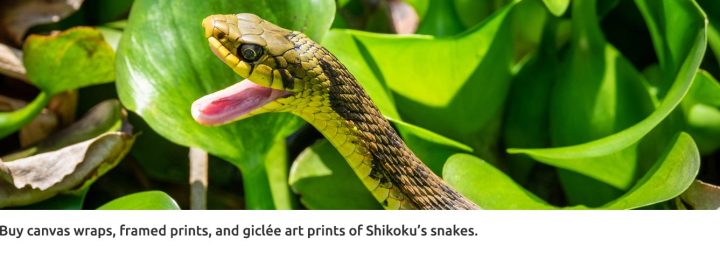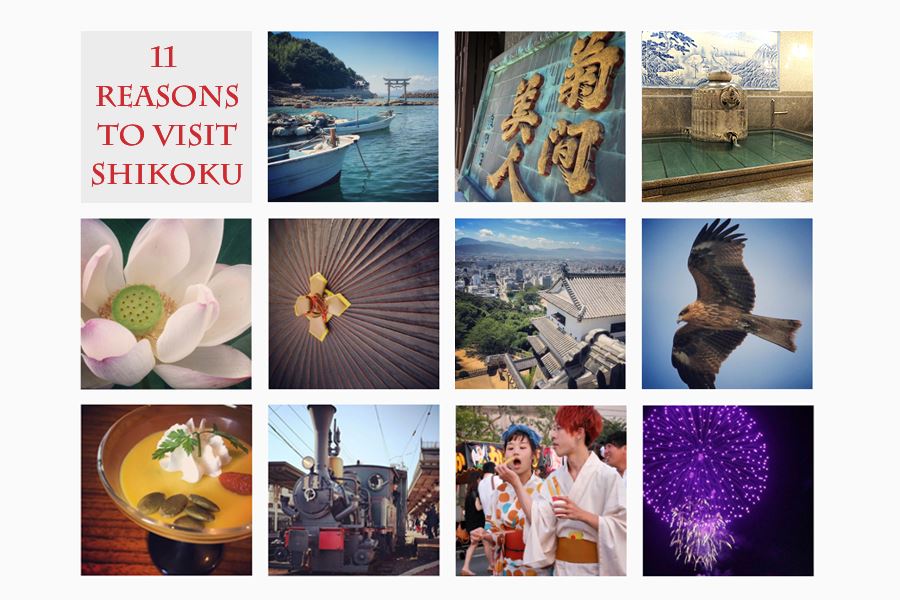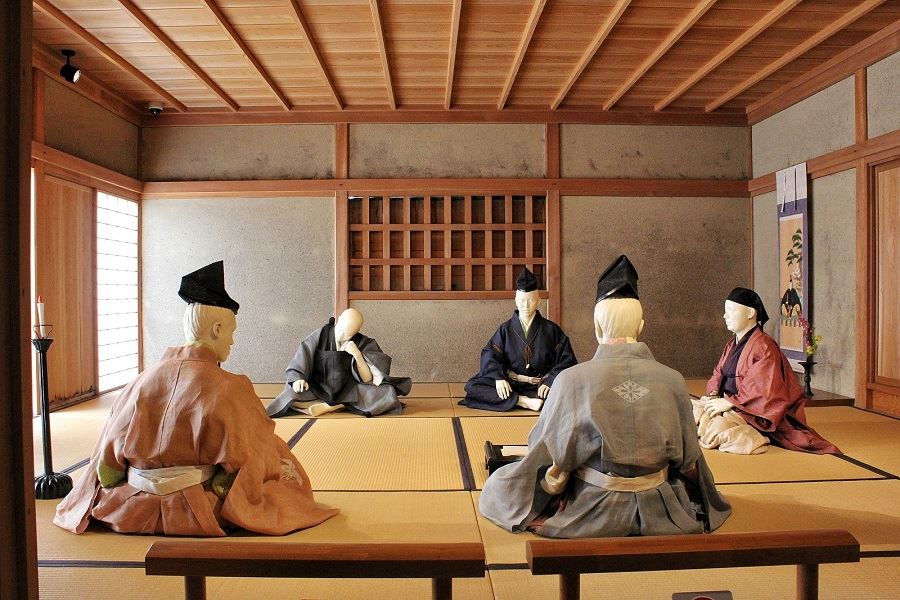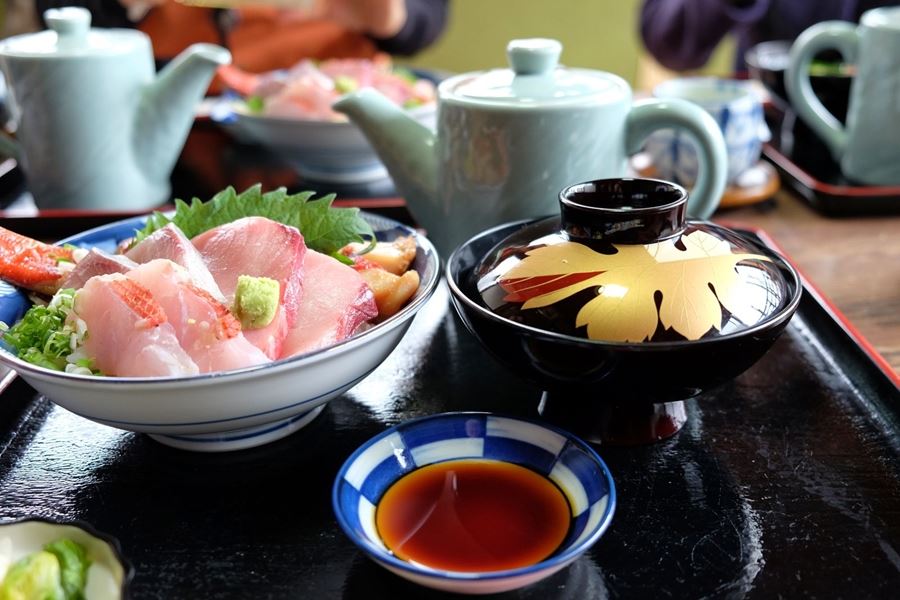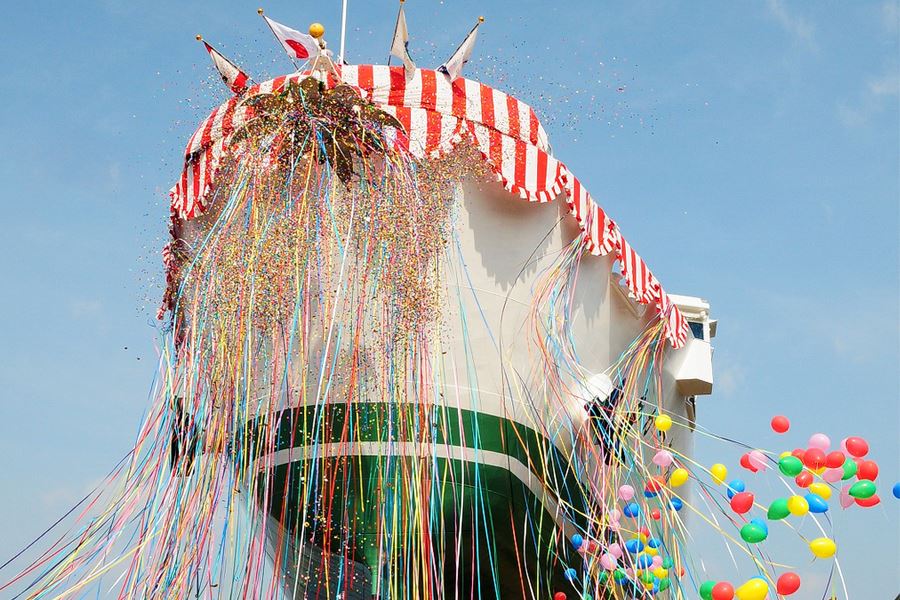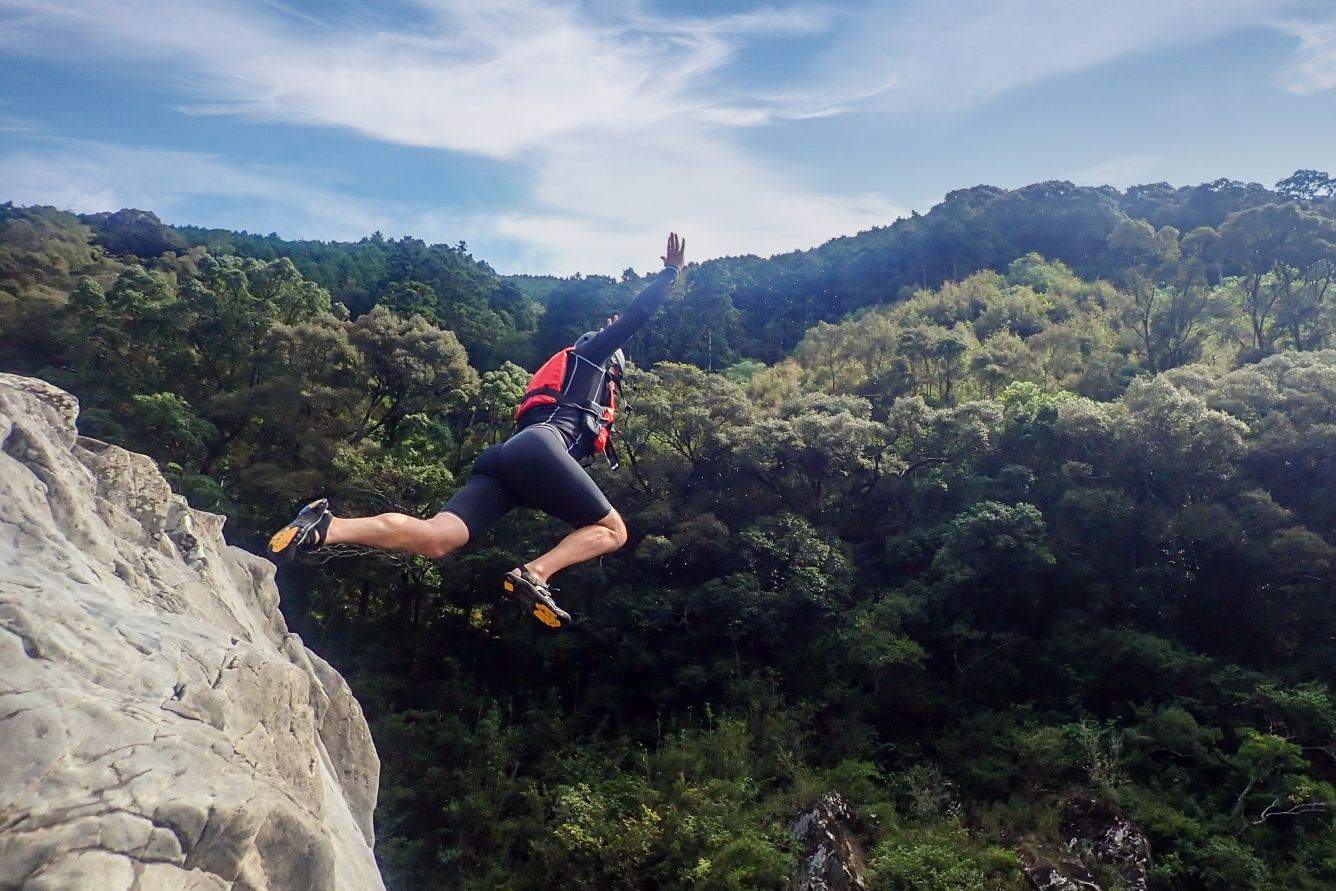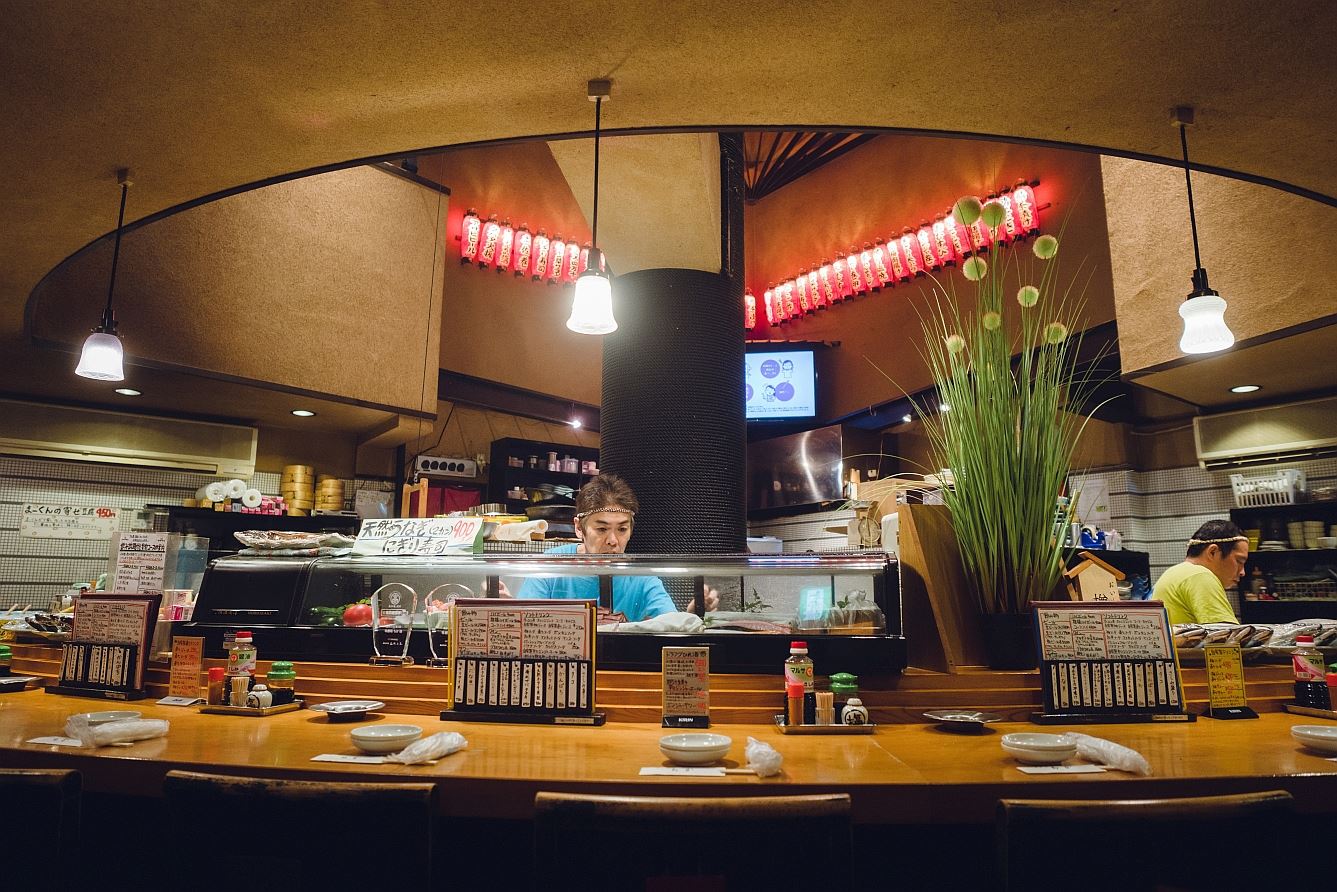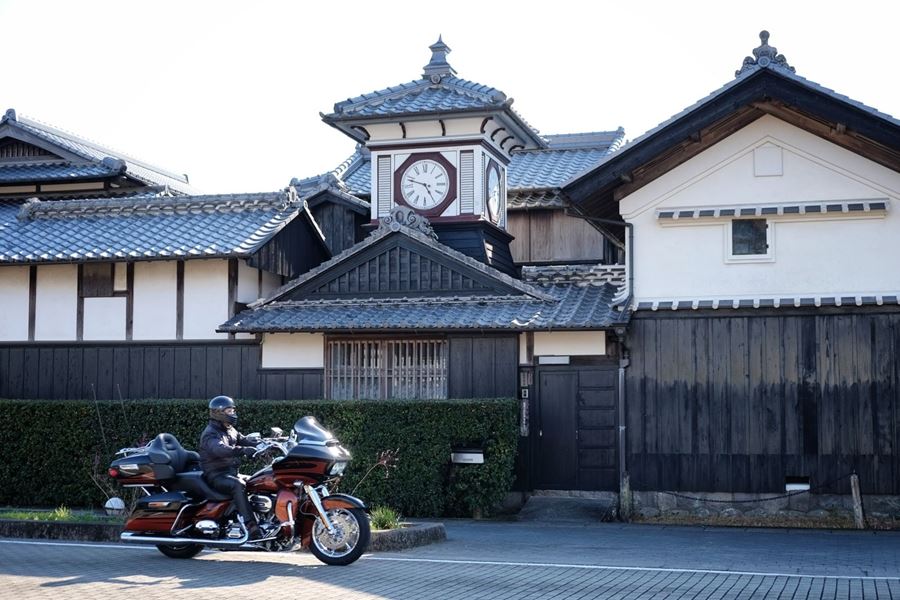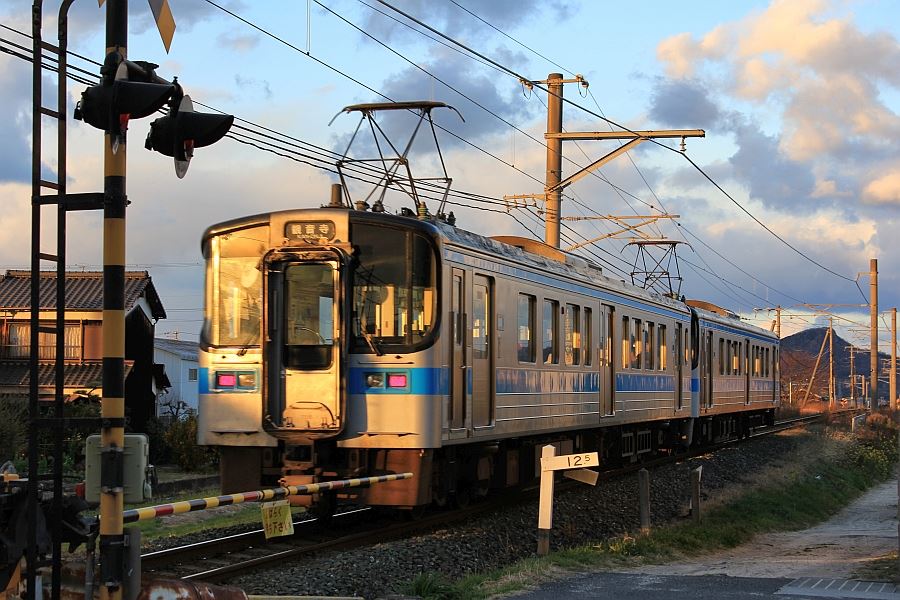Shikoku’s Snakes
Home » Shikoku’s Snakes
Shikoku’s Snakes
Not everybody likes snakes, and we understand that some people would be happy if they left Shikoku without having seen a single snake. But there are quite a few of them on the island, and if you know what you’re looking at, they can be delightful. Eight species of snake live on Shikoku, but here we’ll look at four or five that are commonly seen.
First, let’s clear up some terminology. You know the expression “poisonous snake”. This is really an amateur’s expression for what pros call a “venomous snake”. Simply put, a poisonous snake will make you ill if you bite it. A venomous snake will make you ill if it bites you. There is one variety of snake in Shikoku that is both poisonous and venomous, the yamakagashi, or tiger keelback. It’s generally known as a harmless creature, even though big ones can look a bit alarming with their green and black mottled pattern with red spots, and yellow belly. It’s long and slender, with a small, narrow head that doesn’t bulge out much from the neck. This snake is often seen in or near water, and it gets its poison from the toads that it eats. When threatened, the yamakagashi tends to flatten itself to the ground. If you’re tempted to pick it up or even bite it, you’re likely to experience much discomfort from the poison in its neck glands. It doesn’t strike since its venomous fangs are in the back of its mouth.
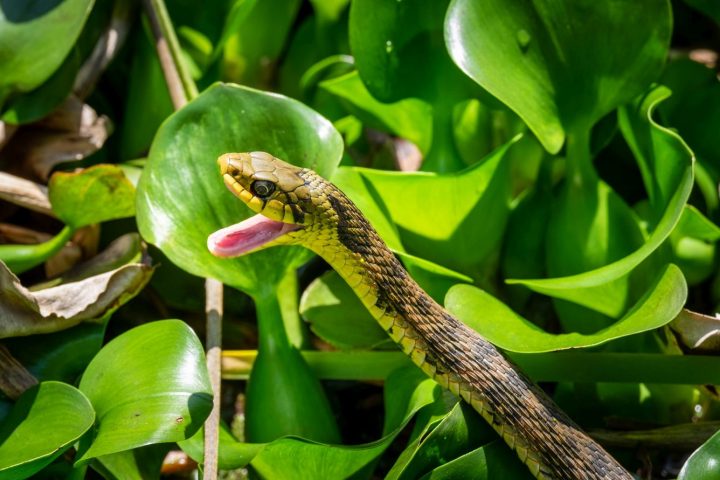
The mamushi, or pit viper, is a venomous snake. It’s short and chunky, with a distinctive pattern of brown rings with a dot in the middle. Its head is broad and triangular, and it has gold eyes. It lives all over the place. Getting bitten is a big deal, with hospitalisation of up to a month. However, most people who get bitten do so when trying to pick one up, so let’s not do that. The mamushi flees when it can, but when threatened, it coils ready to strike. With further provocation, it strikes with enough force to penetrate clothing. Its patterning is very easy to spot, and humans seem hardwired to stop dead at the sight of it. Be glad if you see one and can get a photo, from a sensible distance.
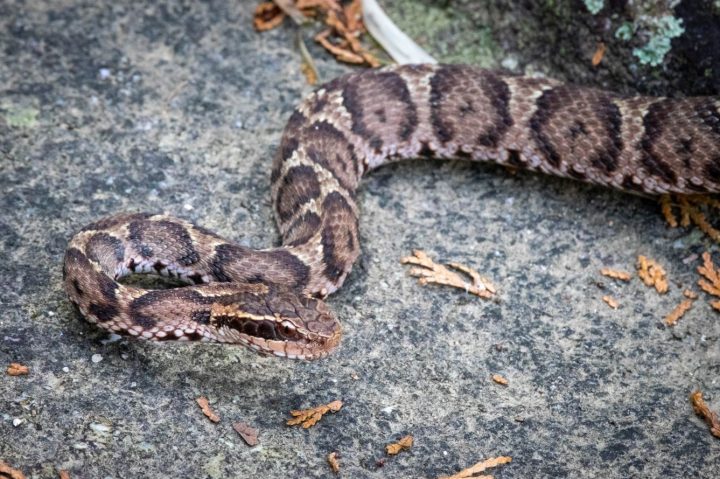
The other two main types are called rat snakes, comprising the aodaishō and shimahebi. These are both quite large, long, and slender, with a rectangular head and flat nose. The aodaishō is a grey-greenish colour, sometimes mottled, while the shimahebi, or striped snake, is a light brown with four stripes of darker brown running the length of its body. It’s a very elegant creature. Rat snakes are usually keen to get away from people, but if you corner them, they will coil, rattle their tails like a rattlesnake, and strike. They have no venom, but if they get their teeth into you it hurts. Juvenile rat snakes have a patterning that slightly resembles that of mamushi, but their slenderness is totally unlike the thickness of a mamushi.
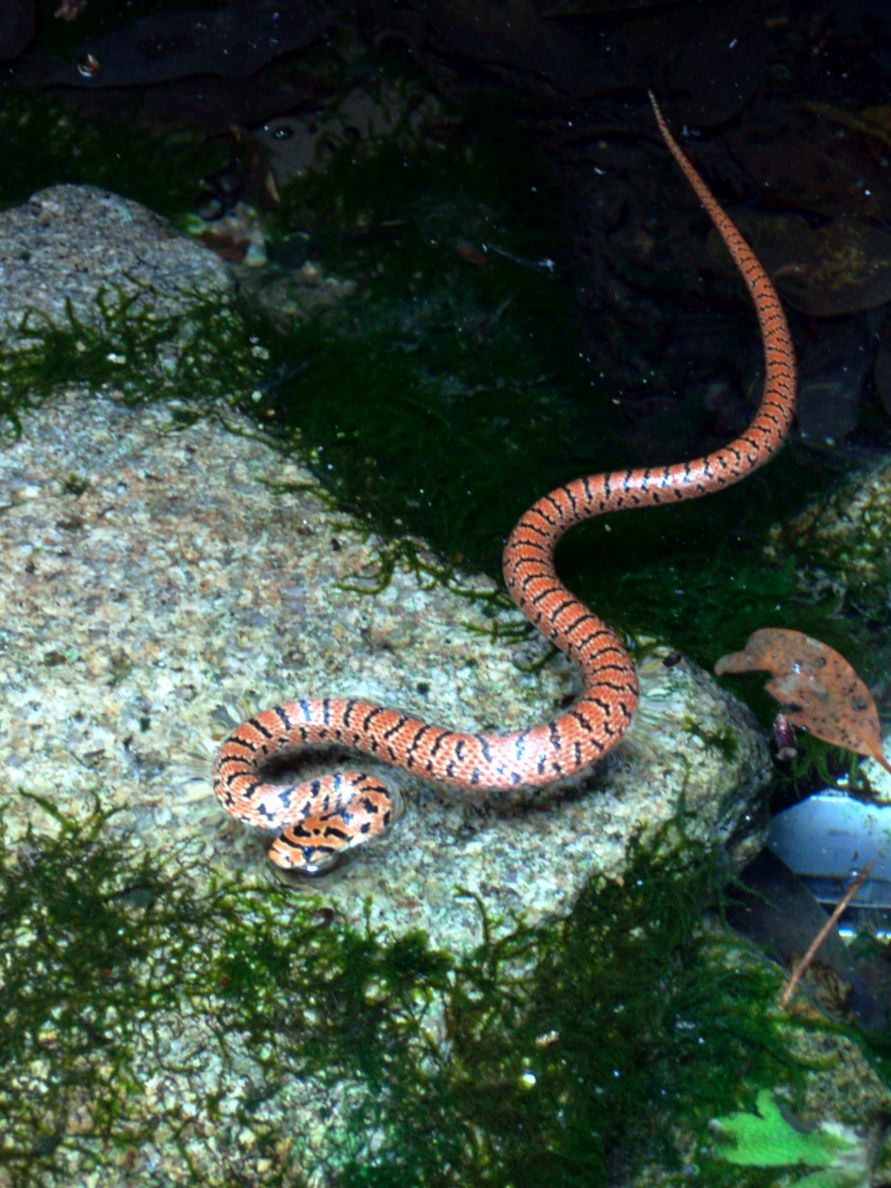
The only other snake of the eight types we’ve seen personally is the jimuguri, or Japanese forest rat snake. This little beauty is orangey-red with a coral pattern. Despite their dramatic colouring, they’re harmless. If you see one of these, give us a call and we’ll rush over with our best camera.
You may occasionally see an all-black snake. These are karasuhebi, or crow snakes. This is not actually a separate species. Rather, it’s any one of the eight species with a defective melanin expression. So a karasuhebi could be a mamushi for example.
All of these snakes are active from May to November, bringing a tingle of excitement to everyday life. Macho people like to pick them up and otherwise pester them, but we recommend quietly watching them as they slither about minding their own business.
Related Tours

Experience the most beautiful and interesting temples of the Shikoku Pilgrimage in seven days.

A tour for families or friends, staying in the most characterful kominka and ryokan of Shikoku.

Visit the most beautiful and interesting temples of the Shikoku Pilgrimage and walk the toughest trails.
